Constitution House of Tabriz: A Revolutionary Hub
The Constitution House of Tabriz, built in the late 19th century during the Qajar era in 1868, is a must-visit landmark in Tabriz. This historic building, designed in the Qajar architectural style, played a crucial role during the Constitutional Revolution in Iran.
Located near the bustling Great Bazaar of Tabriz, the house was the gathering place for key revolutionaries like Sattar Khan and Bagher Khan, along with activists such as Seqat-ol-Eslam Tabrizi.
The house originally belonged to Haji Mehdi Kuzeh Kanaani, a revolutionary figure known as "Abolmele" (Father of the Nation). In 1975, the house was registered as a national heritage site, and today it serves as a museum that offers a glimpse into Iran’s fight for democracy.
The Constitution House stands as a reminder of the city’s rich history and resilience. Stay with us to explore more about this iconic monument, its role in shaping the history of Iran and constitution house of tabriz significance.
Why Visit The Constitution House of Tabriz?
The Constitution House of Tabriz holds great significance due to several key factors:
- This is not just any historic house; it is the most important historical residence in Tabriz, tied to the Constitutional Revolution.
- You won't find another house like this in Tabriz. It dates back to the Qajar era and tells the story of Iran’s struggle for constitutionalism.
- During its time, the house served as a safe meeting place for key figures in the revolution, including Sattar Khan and Bagher Khan.
- Beyond its historical importance, the architecture and decorative elements of the house are visually stunning and worth seeing.
- Visitors can also explore the museum within the house, which showcases artifacts and documents from the Constitutional era.
- It was registered as a national heritage site in 1975.
About the Constitution House of Tabriz
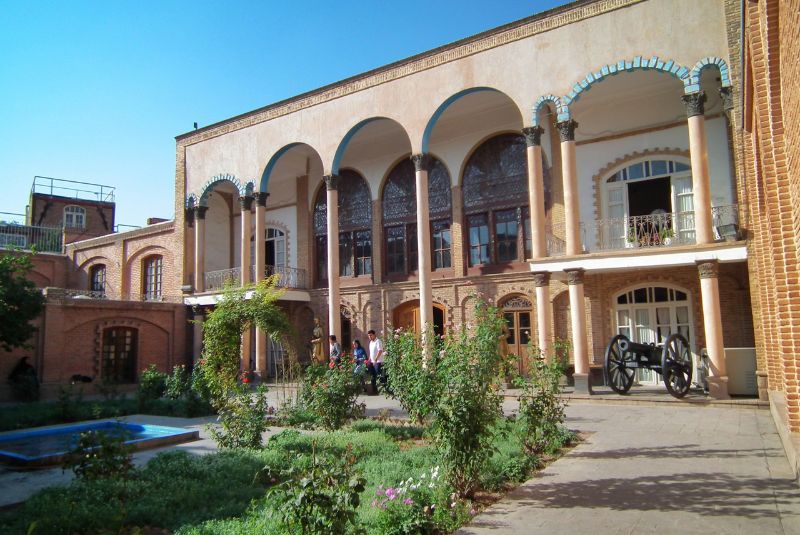
The Constitution House of Tabriz, located in the historic Rashtakoocha neighborhood near the Tabriz Bazaar, is a two-story Qajar-era building with significant historical importance.
Built in 1868 by Haj Vali Me’mar Tabrizi, the house was owned by Haji Mehdi Kuzeh Kanaani, a prominent merchant and a major supporter of the Constitutional Revolution.
This building became a gathering point for revolutionary leaders such as Sattar Khan, Bagher Khan, and Seqat-ol-Eslam Tabrizi during the 11-month siege of Tabriz, serving as a command center for their operations.
In 1975, the house was officially registered as a national monument of Iran, and in 1988, it was acquired for preservation. The unique architectural features, such as the intricately carved doors, stained-glass windows, and traditional elements like the kolah farhangi and ghelam gardesh, make the house a striking symbol of its era.
In 1996, the Constitution House was converted into a museum displaying artifacts from the revolution, including statues of key figures, Sattar Khan’s pistol, and historical documents. This museum offers visitors a glimpse into the spirit of the revolution and the role Tabriz played in shaping Iran's modern history.
History of the Constitution House of Tabriz
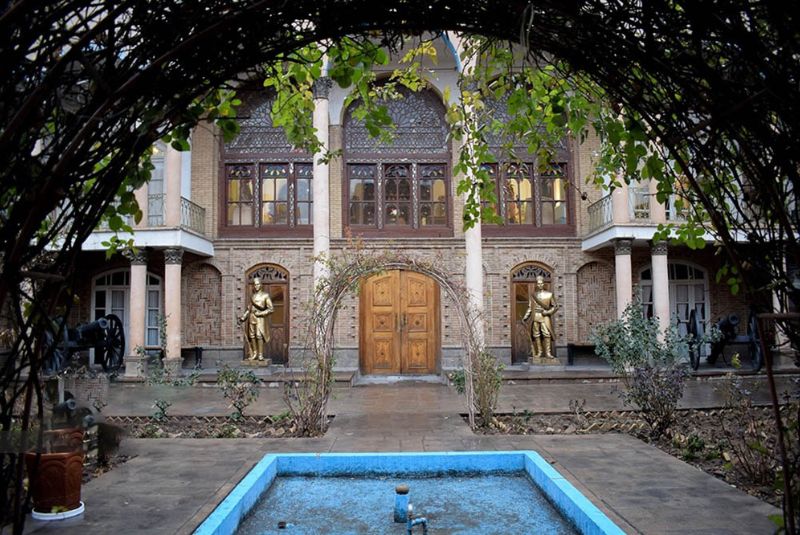
The Constitution House of Tabriz, built in 1868 by master architect Haj Vali, was initially owned by Haj Mehdi Koozekonani, a prominent merchant and supporter of the Iranian Constitutional Revolution. Known as "Abolmele," Haj Mehdi provided his home as a meeting place for key revolutionaries during the Constitutional Movement.
When Mohammad Ali Shah Qajar bombarded the parliament in 1908, Haj Mehdi opened the house to leading figures of the movement, including Sattar Khan, Bagher Khan, Thaqat al-Islam Tabrizi, and Haj Mirza Agha Farshi. This house became the central hub for planning and printing anti-government proclamations, playing a vital role in advancing the revolution.
During World War II, after Azerbaijan was occupied by Soviet forces, the Constitution House became the meeting place for the leaders of the Azerbaijani Democratic Party in 1946–1947. This further solidified its place in history as a symbol of political activism and resistance.
In 1975, the house was officially registered as a national heritage site by the Cultural Heritage Organization of Iran. In 1996, it was converted into a museum, showcasing documents, artifacts, and personal items related to the Constitutional Revolution, preserving the legacy of this pivotal movement in Iranian history.
Architecture of the Constitution House of Tabriz
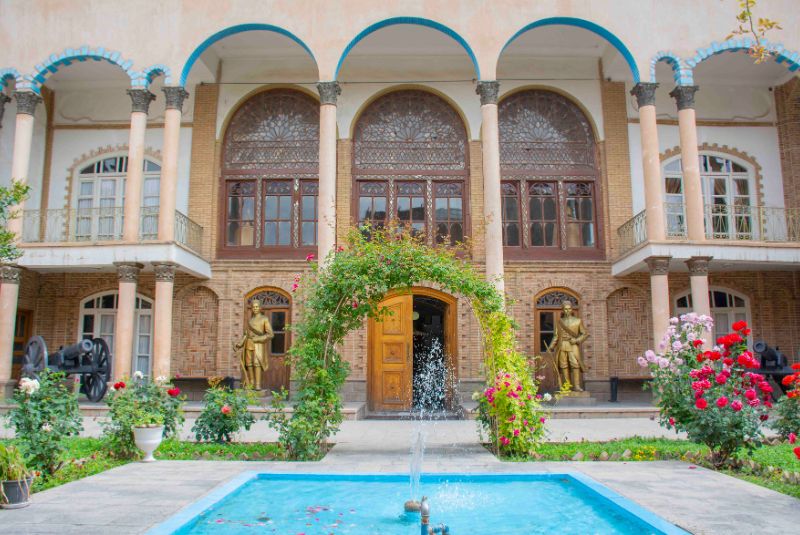
The Constitution House of Tabriz, a stunning architectural masterpiece, was constructed in 1868 by Haj Vali, a renowned architect of the time. Covering an area of 1,300 square meters, the house is built in the traditional Qajar style, using brick, stone, and clay, with two distinct floors featuring separate internal and external areas.
Upon entering, visitors are greeted by a majestic structure with elegant columns and stunning orsi windows, adorned with colorful stained glass that instantly captivates the eye.
The first floor contains six rooms, while the second floor features an additional six rooms along with a grand central hall, known as the tanabi, measuring 6 by 9 meters.
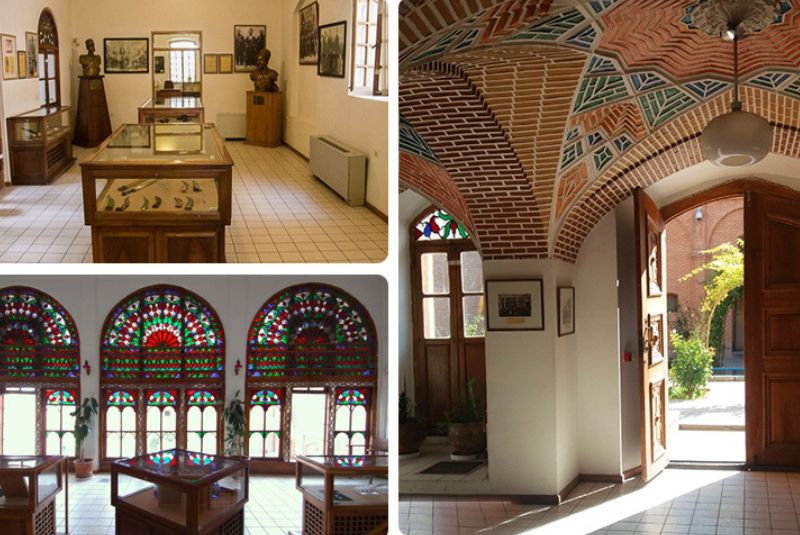
The most visually striking part of the house is the second-floor room facing the courtyard, known as the shahneshin. This room boasts intricate wooden ceilings, decorative carvings, and doors and windows with beautifully colored glass, which create a mesmerizing play of light inside the room. The wooden decorations and masterfully carved doors reflect the high level of craftsmanship of the time.
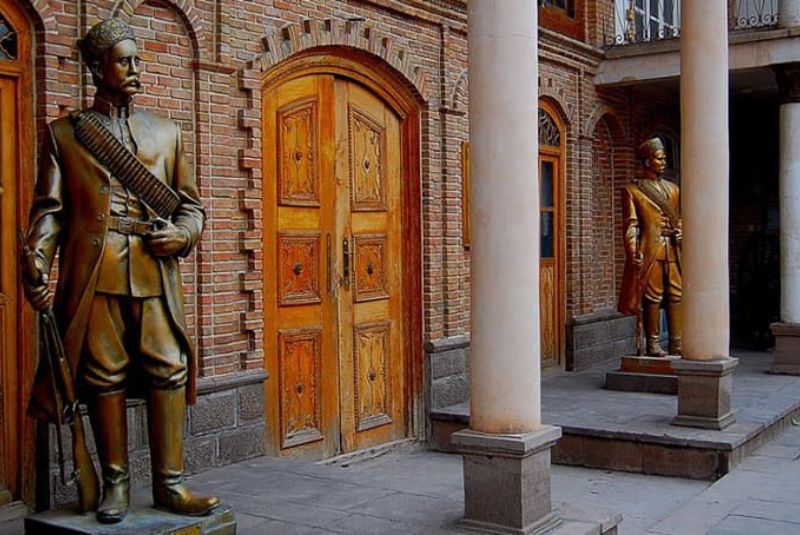
One of the house's most iconic features is its distinctive khatam-kari or inlaid windows, which rise and slide upward instead of swinging open. These windows, painted in red, green, and white, enhance the building’s charm and showcase traditional Iranian artistry. The main hall is lit by skylights, supported by four columns adorned with exquisite plasterwork, making the interior even more captivating.
The architecture also includes the kolah farangi building, visible from the second floor. This small, pavilion-like structure, common in Qajar designs, blends Iranian and European styles. Its intricate details mirror those of the main building, enhancing the overall harmony of the house.
Things to See at the Constitution House of Tabriz
Constitution Museum
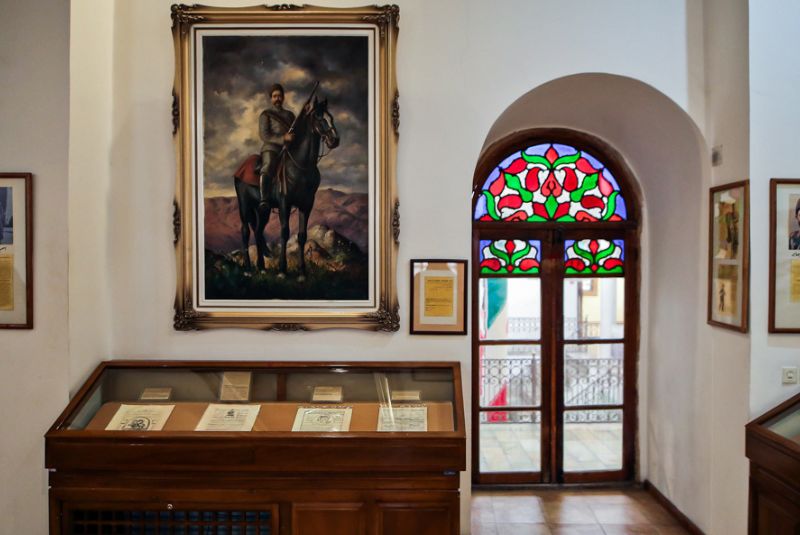
For those interested in the artifacts and personal belongings of prominent figures of the Constitutional Revolution, the Constitution House Museum is a must-visit. Established in 1996, following renovations and rearrangements of the house’s various sections, the museum displays unique and captivating items. Highlights include Sattar Khan’s revolver, historical documents related to the revolution, period photographs, and statues of key revolutionary figures.
The museum provides a comprehensive view of the era and its influential personalities. Also, Visitors can view personal items used by revolutionary leaders, offering a closer look at the lives of those who fought for freedom. In the basement, the museum houses a library containing 500 books, including around 300 volumes dedicated to the subject of the Constitutional Revolution.
Statues of Revolutionary Figures
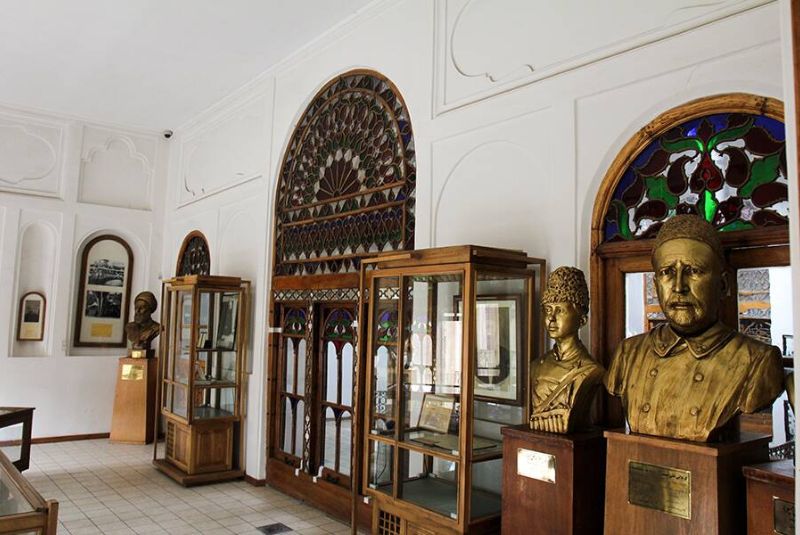
The house features statues of notable constitutionalists. Among them are Zeynab Pasha, the only female revolutionary, as well as other significant figures such as Hossein Khan Baghban, Haj Ali Dovachi, Thiqah al-Islam Tabrizi, Haj Ali Khatai, Howard Baskerville, Karbala'i Ali Mousavi, Sheikh Ali Asghar Leilavayi, Akhund Khorasani, and Ali Akbar Dehkhoda.
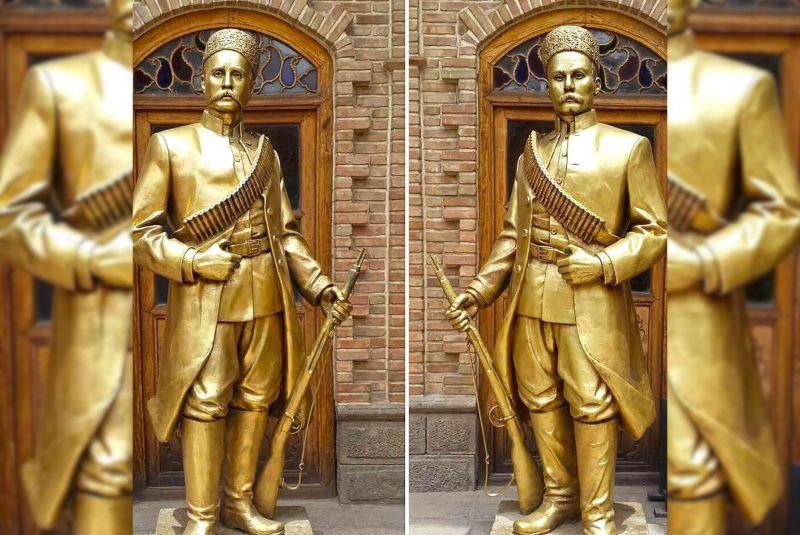
These statues commemorate their contributions to the revolution and offer insight into their roles during this pivotal period.
Precious and Valuable Artifacts
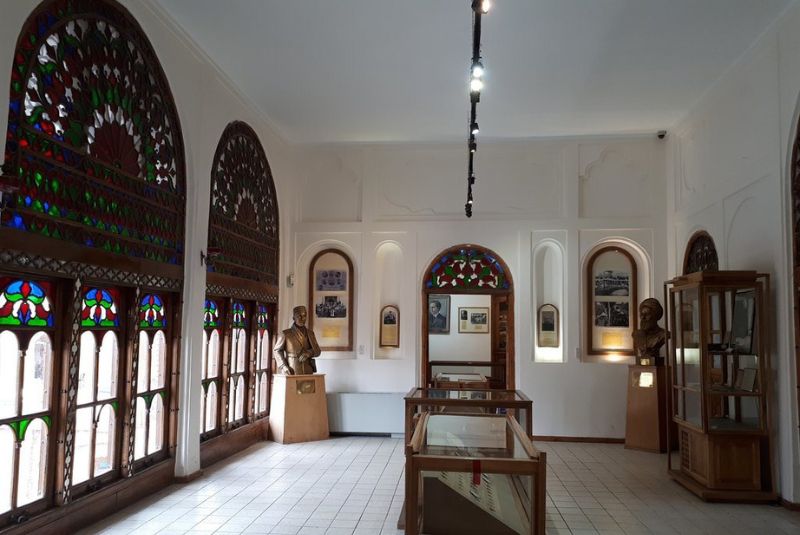
The Constitution House of Tabriz is renowned for its valuable and historically significant artifacts. Among these are Sattar Khan’s revolver and a Russian Moser pistol with a leather holster, both highly regarded by visitors.
Additionally, this pistol was donated to the Constitutional Museum by Yadollah Khan, the son of Sattar Khan. The house also displays other precious items, including a variety of revolutionary seals and a collection of documents from opponents of the revolution, including images of Mozaffar al-Din Shah and Mohammad Ali Shah.
Historic Documents and Printing Equipment
One of the intriguing aspects of the Constitution House is its collection of documents from the anti-constitutionalist factions. These include images and records related to the resistance against the revolution.
Also on display is an old gelatin printing press, or polygraph, used for printing revolutionary pamphlets and documents. This equipment, along with other historical manuscripts and orders, provides a fascinating glimpse into the era’s media and communication methods.
Best Time to Visit the Constitution House of Tabriz
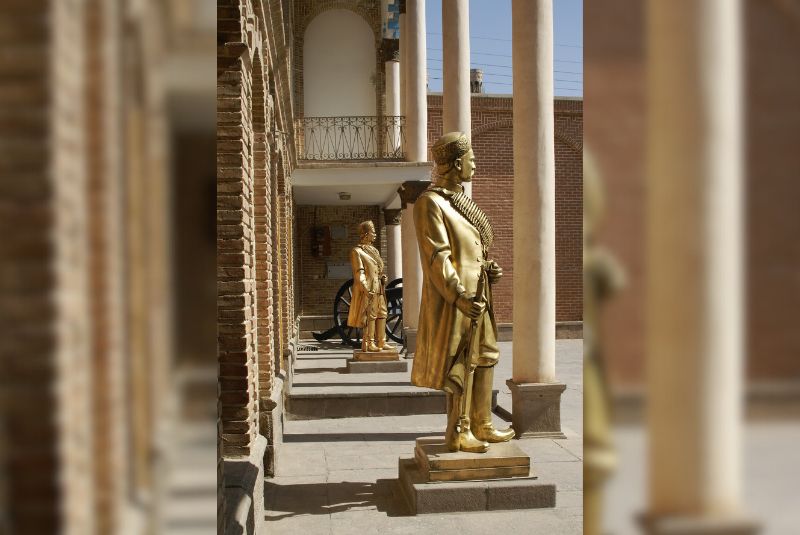
Tabriz has a cold climate, especially during autumn and winter when it is often covered in snow and ice. The best time to visit the city and the Constitution House is during the first six months of the year, particularly in spring and summer.
The weather during this period is pleasant, making it ideal for sightseeing. If you’re not a fan of cold weather, this is the best time to enjoy the attractions of Tabriz, including the Constitution House, as it draws many tourists during these months.
Opening Hours
You can visit the Constitution House of Tabriz every day of the week, except Mondays. During the first half of the year, the museum is open from 9:00 AM to 7:30 PM, and in the second half, from 9:00 AM to 5:30 PM. However, the museum is closed on specific religious holidays: 9th and 10th of Muharram, 28th of Safar, 21st of Ramadan, 25th of Shawwal, and 14th of June.
Ticket Price
The entrance fee for Iranian visitors is 2,500 Tomans, and for international visitors, the ticket price is 15,000 Tomans.
Location of the Constitution House of Tabriz
The Constitution House of Tabriz is one of the historical landmarks of East Azerbaijan Province. It is located in Rasht-e-Koocheh neighborhood, west of Tabriz Bazaar, directly across from the Jameh Mosque of Tabriz.
How to Get There

To reach the Constitution House of Tabriz, you can use public transport or your personal vehicle.
- By Bus: Get off at the Rasht-e-Koocheh station and walk 300 meters to the museum.
- By Metro: Exit at Shahid Mohaqqeqi station and walk 800 meters to reach the destination.
If you're driving, note that the city center can be busy, and parking may be limited. It's best to park farther away, near the Tabriz Bazaar, and walk into Rasht-e-Koocheh, where you will find the house opposite the Jameh Mosque.
Tourist Attractions Near the Constitution House of Tabriz

The Constitution House of Tabriz is surrounded by several other fascinating historical and cultural attractions. After visiting the museum, you can explore nearby sites, including:
- Qajar Museum (3.5 km away) – A museum dedicated to showcasing artifacts from the Qajar dynasty.
- Golestan Park (1.4 km away) – A serene park where you can relax and enjoy the greenery.
- House of Behnam Ganjaei (2 km away) – Another historical house reflecting the architectural style of old Tabriz.
- Tabriz Cartoon Museum (1.6 km away) – A unique museum displaying the art of cartooning.
- Ganjalikhan Gate (900 meters away) – A historic gateway in Tabriz.
Accommodations Near Constitution House of Tabriz
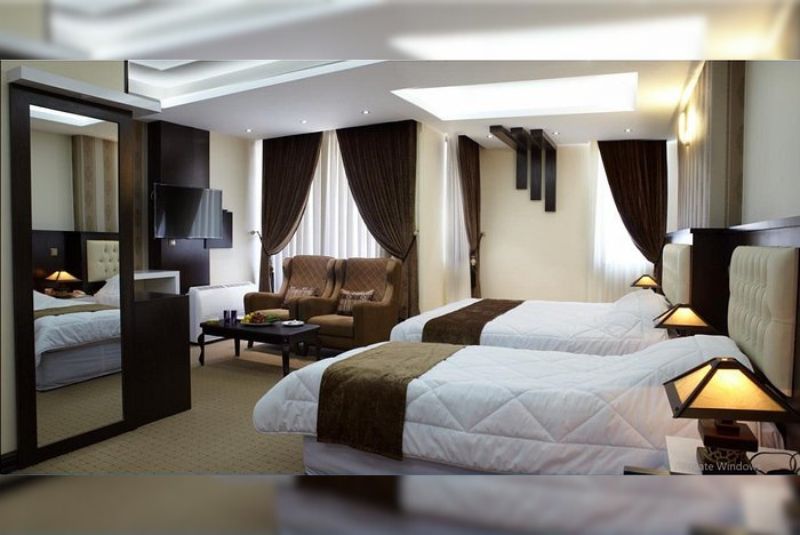
If you are looking for a place to stay near the Constitution House of Tabriz, there are several hotels available, offering comfort and convenience:
- Arg Hotel Tabriz – A well-known hotel offering comfortable rooms and amenities for tourists.
- Ghods Hotel Tabriz – An affordable and centrally located hotel.
- Azerbaijan Hotel Tabriz – Ideal for visitors looking for a historical atmosphere with modern services.
- Ahrab Hotel Tabriz – Located near many historical attractions, offering a relaxing stay.
- Sina Hotel Tabriz – A popular choice among travelers for its great location and services.
Restaurants Near Constitution House of Tabriz
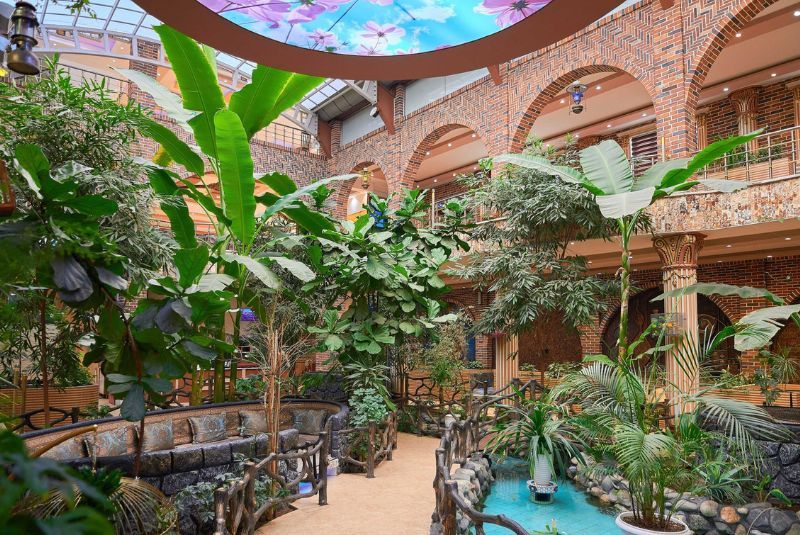
After visiting the Constitution House, enjoy a meal at one of the nearby restaurants:
- Shazdeh Restaurant – Known for its traditional Persian dishes and cozy atmosphere.
- Darbar Restaurant – A great choice for both Persian and international cuisine.
- Baradaran Restaurant – A family-friendly restaurant offering local favorites.
- Qurani Restaurant – Famous for its delicious Persian kebabs and traditional meals.
Bottom Line
The Constitution House of Tabriz is a symbol of Iran’s struggle for constitutionalism and freedom, offering visitors a unique glimpse into the country's history.
Built in 1868 during the Qajar era, this historic house served as a meeting place for key revolutionary figures like Sattar Khan and Bagher Khan. Today, it stands as a museum showcasing artifacts, documents, and personal items from the Constitutional Revolution. Located near the bustling Tabriz Bazaar, the house is a must-visit for anyone interested in Iranian history and architecture
Share your story!
Comment below and let us know about your Experience.
Your story inspires others!


Comment
Leave a Comment